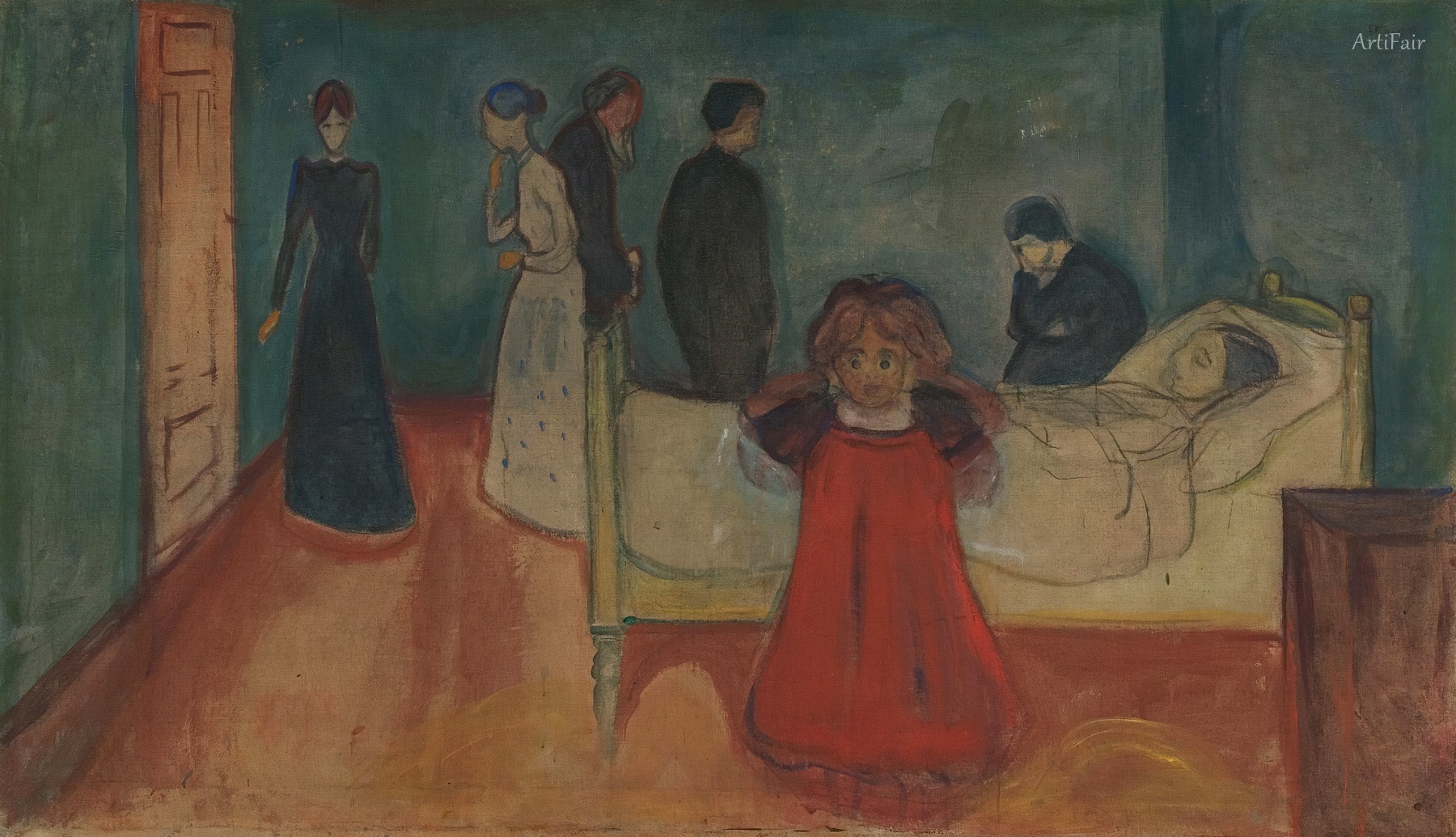
Art Appreciation
This striking artwork captures a profound moment, filled with tension and unspoken sadness. The scene centers on a bed with a lifeless child laid out on it, cloaked in the shadows of death. Surrounding the bed, a group of figures—some wearing black, others in muted colors—stand still as statues, their postures conveying both grief and helplessness. Each face reflects a range of emotions: sorrow, resignation, and perhaps a touch of bewilderment, as they confront this tragic loss. The contrasting bright colors of red and green in the room create a shocking juxtaposition, where the vibrant reds evoke a sense of warmth yet highlight the chilling atmosphere of the scene, encapsulating the dichotomy of life and death.
As we gaze further into the composition, the usage of space and placement of figures play an integral role in transmitting emotional depth. Munch employs thick brushstrokes and a flat perspective that draws us inward—giving the sense of being a witness to this intimate, sorrowful spectacle. Each figure, from the stoic adults to the bereaved child, seems to reflect an essence of Munch’s own childhood experiences with loss, making this painting resonate with haunting familiarity. The historical context of the late 19th century, a period marked by existential contemplation and psychological exploration, adds layers to its significance. It invites viewers to reflect not only on the innocence of childhood but on the broader thoughts of mortality that touch each of our lives, ultimately resonating through the ages.